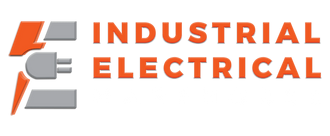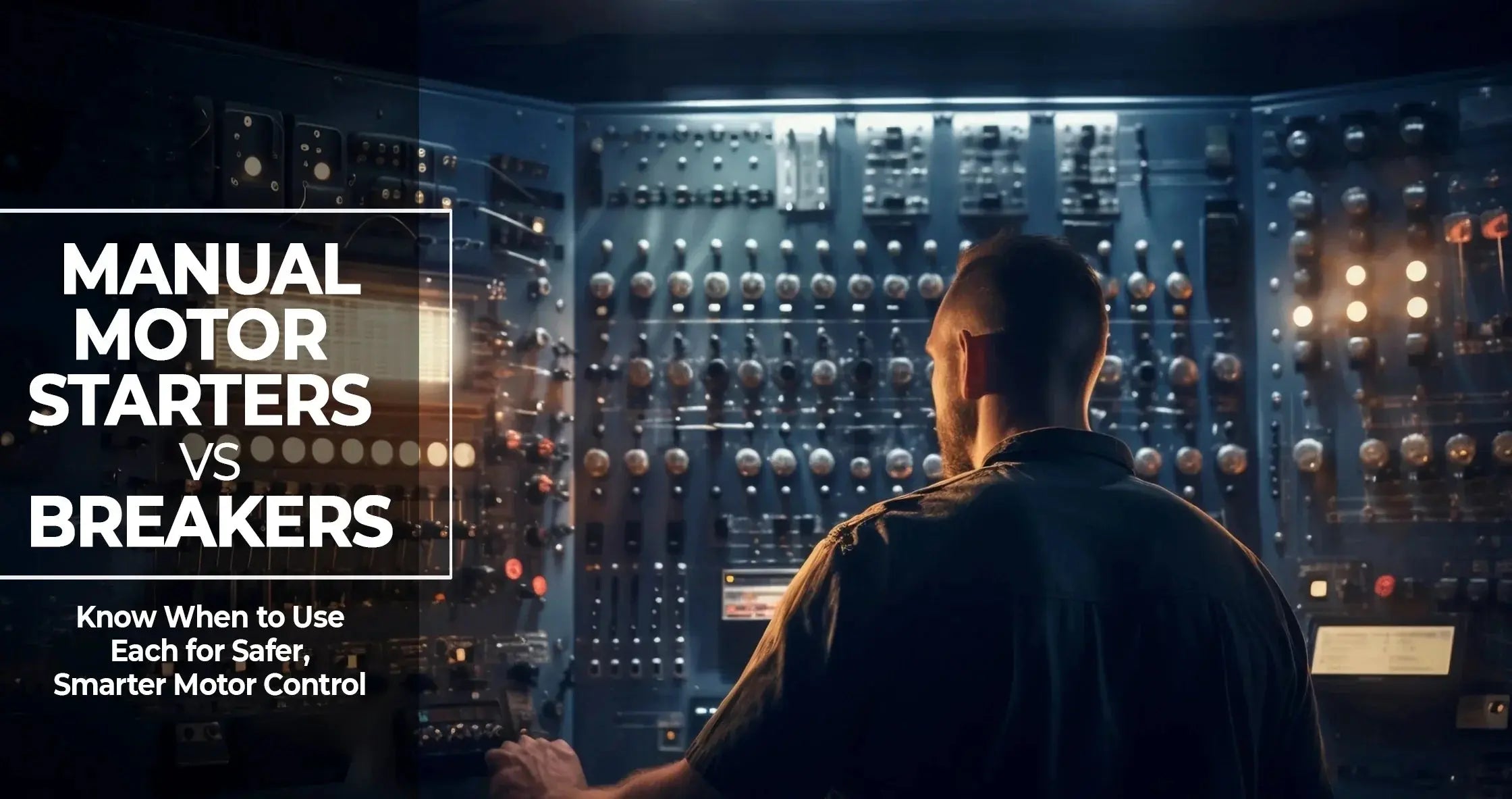In the world of industrial motor control, understanding the function and use of manual motor starters is crucial for both safety and performance. These devices offer an essential layer of protection and control for motors, particularly in small to medium-sized applications. But when should you use a manual motor starter instead of a breaker? And how do these two differ in terms of protection, functionality, and application? This guide explores these questions in depth.
What Are Manual Motor Starters?
Manual motor starters are electromechanical protection devices designed to switch motors on and off manually while providing protection against overloads and short circuits. These compact devices combine the functionality of a circuit breaker and an overload relay in a single unit.
Key Features:
- Manual ON/OFF operation
- Overload protection (thermal)
- Short-circuit protection (magnetic)
- Compact design suitable for panel mounting
- Local motor control without the need for external relays
Manual motor starters are typically used in applications where automation is not required, and manual control is sufficient. They are ideal for small motors like fans, compressors, and pumps that don't need remote or automated control systems.
Circuit Breakers in Motor Circuits
Circuit breakers, on the other hand, are primarily protective devices. While they can interrupt current flow during fault conditions such as short circuits or overloads, they are not designed to control motors directly.
Key Features:
- Fault current interruption
- Reusability after tripping
- No overload sensing in most types
- Often used in conjunction with contactors or overload relays
While a circuit breaker protects wiring and equipment, it lacks the thermal overload protection and manual switching capabilities of manual motor starters.
Manual Motor Starters vs Breakers: Key Differences
|
Feature |
Manual Motor Starters |
Circuit Breakers |
|
Primary Function |
Motor control & protection |
Fault protection |
|
Overload Protection |
Yes |
Not always |
|
Short Circuit Protection |
Yes |
Yes |
|
Manual Motor Operation |
Yes |
No |
|
Size |
Compact |
Varies |
|
Application |
Small motors |
Panel protection |
Manual motor starters are ideal for managing individual motors locally. Circuit breakers are better suited for protecting entire electrical circuits or used in combination with contactors in more complex systems.
When to Use Manual Motor Starters
Use manual motor starters when:
- You have small, standalone motors
- Manual ON/OFF switching is acceptable
- You need combined short-circuit and overload protection
- Space-saving is essential
Common Applications:
- HVAC systems
- Water pumps
- Conveyor belts
- Small manufacturing machines
These starters are particularly useful in industries like agriculture, food processing, and HVAC where simple control is often preferred over automation.
When to Use Circuit Breakers
Circuit breakers are the better choice when:
- You require fault protection for wiring systems
- You’re working with larger motor systems requiring contactors
- Automation or remote control is required
- You’re designing for flexible system expansion
They are essential in power distribution panels, industrial automation systems, and any application requiring advanced protection schemes.
Advantages of Manual Motor Starters
- Cost-effective: Combines two protection functions in one device
- Simplified wiring: Reduces the number of components needed
- Local control: Enables operators to start/stop motors nearby
- Thermal-magnetic protection: Offers better motor life and uptime
- Space-saving: Useful for tight control panels
Limitations of Manual Motor Starters
- Not suitable for remote or automated control
- Limited current ratings (typically under 32A)
- Less effective for complex motor systems
- Requires manual resetting after faults
These limitations make them unsuitable for large motors, automated operations, or where remote control is necessary.
Integration with Other Motor Control Devices
In some cases, manual motor starters can be paired with auxiliary contacts or enclosures to extend their functionality. However, for more complex motor circuits, especially those requiring remote start/stop or multiple motor coordination, using contactors, overload relays, and circuit breakers in combination is more appropriate.
Safety and Compliance Considerations
When designing motor circuits, it's essential to comply with safety regulations and standards such as IEC 60947-4-1 and UL 508. Manual motor starters are often certified for these standards and offer reliable protection within their intended use range. Always consider the motor's full-load current (FLC), application environment, and starting conditions when selecting the right protection device.
Conclusion
In summary, manual motor starters are best suited for straightforward, localized motor control where simplicity, space-saving, and dual protection are needed. Circuit breakers are more appropriate in large-scale systems or those requiring centralized fault protection. Choosing the right solution depends on your specific motor application, safety requirements, and control preferences.
Explore Related Product Collections
If you're planning to upgrade or design a motor control system, browse our relevant product collections:
Equip your system with the right components from Industrial Electrical Warehouse to ensure performance, reliability, and safety.


